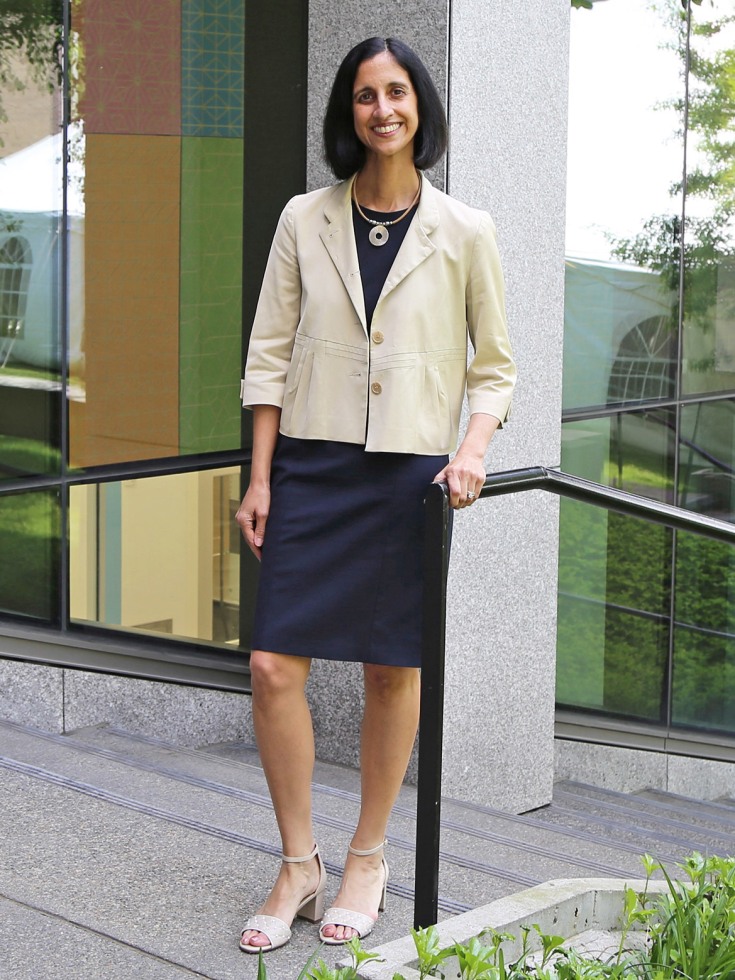PROVIDENCE, R.I. [Brown University] — Tejal Desai’s first year as dean of the Brown University School of Engineering has been both a new beginning and a homecoming. The accomplished biomedical engineer and academic leader earned her bachelor’s degree at Brown in 1994. Three decades later, she is now charged with leading the oldest undergraduate engineering program in the Ivy League and third oldest civilian undergraduate engineering program in the U.S. to new heights.
Since the elevation of the program to a school in 2010, engineering at Brown has experienced significant growth with the addition of new faculty, increased research funding and the construction of a state-of-the-art, 80,000-square-foot Engineering Research Center. Desai believes the school is poised to continue that growth with an expanded research and teaching enterprise, deepening collaborations on campus and beyond, and an increasingly diverse and inclusive community all on the short-term horizon.
Before joining Brown in September 2022, Desai held academic leadership positions at the University of Illinois at Chicago, Boston University and the University of California San Francisco, and served as a member of Brown’s biomedical engineering advisory board. Her own research spans multiple disciplines including materials engineering, cell biology, tissue engineering and pharmacological delivery systems to develop new therapeutic interventions for disease.
At the end of her first academic year, Desai shared takeaways from year one and her plans for the future.
Q: Having been a student here in the 1990s, how have you seen the engineering program evolve in terms of students, research and mission?
One big difference is that it wasn't a school. When I was studying engineering at Brown, it was really more of a concentration. To me, that's where I see the evolution. Today, engineering is central to a lot of the teaching, research and other activities that our students engage with at Brown. To see it as a hub of activity and just such a warm, open community is something that I did not see as much in terms of scale back then. There was still a tight-knit community, but we were much smaller. Its evolution into what it is today has been amazing to witness.
Q: You took many initial steps this year — hosting town halls, engaging with faculty, staff, student groups, campus leaders and partners — to learn about the breadth of research taking place across the school and collaborations across and beyond campus. What was your goal, and what did you learn?
A lot of what I wanted to do was to listen. Just because I had been here as an undergraduate 30 years ago didn't mean that I knew the pulse of the place today. Having things like town halls and meeting with a lot of our collaborators and campus leaders gave me a sense of where engineering was and, just as important, where engineering could be — our potential. That informed a lot of what I'm thinking about now in terms of research, education, and our greater community and societal mission.
Personally one of the big pieces of learning I’ve done throughout the year is balancing where we want to go with the processes of how to get there. It may not sound terribly exciting, but it’s essential — and I’m an engineer, so I think about the structures and systems needed to make progress. In that vein, I'm learning how to take in all of the different things we want to do, prioritize them and then start to act on them.
For example, early on, as I spoke to people, I saw that as we continued to fully come back from the pandemic, the community was still grappling with the question of how to rebuild community. How do we regain those bonds and connections among faculty, staff and students? We still have some work to do, but we’ve tried to build community around our shared interests, such as having “Works in Progress” sessions where faculty share their current research, as well as more social gatherings.
